From Impoverished to Empowered



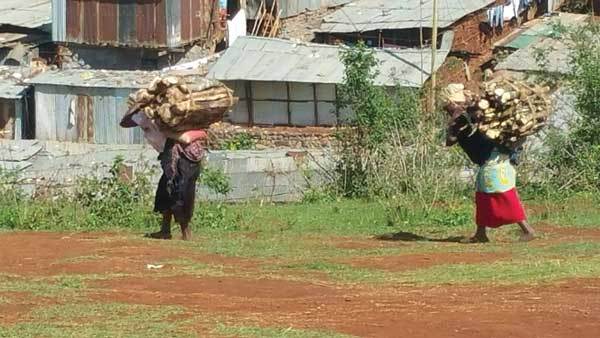
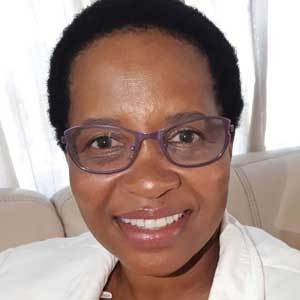
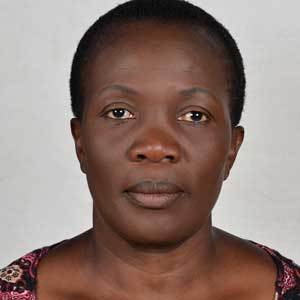
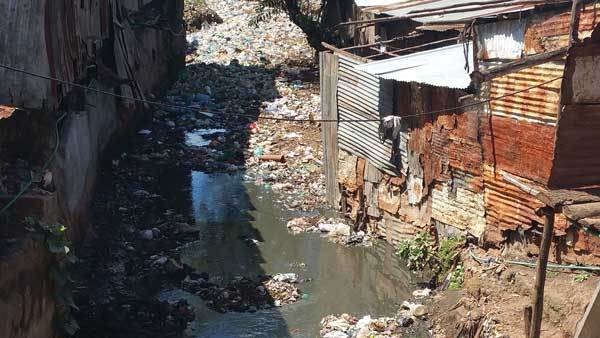








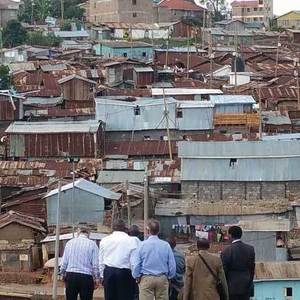
PHOTO: ASTICOM KENYA LTD.
April 23, 2018
BY Ron Kotrba
More people in sub-Saharan Africa lack access to electricity than the entire population of North America. According to the African Development Bank Group (AfDB), 634 million people live without power on the continent of Africa—second in size and population only to Asia, covering 20 percent of the Earth’s total land area and home to more than 1.2 billion people. The vast majority of Africans with no access to electricity, 632 million, live in sub-Saharan Africa. The overall electricity-access rate in Africa is about 45 percent, and for sub-Saharan Africa this drops to 35 percent—up from 23 percent in 1990. To put this in perspective, per capita energy consumption in the U.S. is 13,000 kilowatt-hours (kWh). Excluding South Africa, per capita energy consumption in sub-Saharan Africa is just 180 kWh. And where access to electricity is available in Africa, the supply is often unreliable due to weak transmission and distribution infrastructure.
These staggering statistics have led AfDB to develop what it calls a “New Deal on Energy for Africa.” The goal is to provide Africans universal access to electricity by 2025. Renewable energies, such as biomass power, are vital to this plan.
“In itself, it is a business opportunity,” says Ousseynou Nakoulima, AfDB’s director of renewable energy, energy efficiency and clean cooking. “Sub-Saharan Africa is in the process of development, and energy and power are necessary to that end. Anyone engaging in this can see the upside. To us, renewables are the obvious choice. We want a clean development pathway, compared to the course the more advanced economies took. And although the continent does not contribute much to climate change, it certainly bears the brunt of it.”
Estimates suggest desertification—the process by which a desert grows to encompass once-fertile land—is causing the Sahara Desert to expand southward 20 to 30 miles a year. “Our interest is in mitigation of, and adapting to, climate change,” Nakoulima says.
He further stresses how biomass power technologies serve baseload power versus others that are variable and dependent on the weather. “Biomass—specifically agriculture residue—does not just provide a solution to the problems of energy access and renewable energy,” Nakoulima says, “but it drives business and the value chain all along the ag subsector. In nutshell, these are major advantages.”
Biomass fuel is a major source of energy in sub-Saharan Africa, accounting for about 80 percent of overall energy consumption, according to AfDB. Yet, investment in biomass energy makes up less than 4 percent. “If you look at the uses and sources of energy in sub-Saharan Africa, biomass for heating and cooking comprises the bulk of that,” Nakoulima says. “The 4 percent is formal investments in biomass energy, formalized biomass power or energy generation technologies.”
SEFA
The Sustainable Energy Fund for Africa, a multidonor trust fund administered by AfDB, was established in 2012. “At that time, this activity—renewable energy and energy efficiency—was at the margin of support in Africa,” Nakoulima tells Biomass Magazine. SEFA is funded by four major donor governments: The U.S., the U.K., Italy and Denmark, the largest donor. “With their cooperation, we wanted to plant a seed for this activity to germinate and develop in the [AfDB],” he says. To demonstrate how fast renewables are moving from marginalization to mainstream in Africa, Nakoulima says just one year ago all energy activity at AfDB was housed in one department. “Now, we have one department for clean energy alone,” Nakoulima says.
Three financing windows exist under SEFA: project preparation, equity investments and enabling environment. The project preparation window provides cost-sharing grants and technical assistance to private project developers or promoters to facilitate preinvestment activities for renewable energy and energy efficiency projects. Grant funding targets development activities from feasibility to financial closure for projects with total capital investments of $30 million to $200 million. The equity investment financing window addresses lack of access to early-stage capital for small- and medium-sized projects, in addition to the low managerial and technical capability of smaller entrepreneurs and developers. The enabling environment leg provides grants to support public-sector activities that create and improve the enabling environment for private-sector investments in Africa’s sustainable energy space. “This includes advisory and implementation of legal, regulatory and policy regimes that provide clear and predictable rules for project development, implementation and operation, capacity-building activities to allow the public sector to act as a reliable and creditworthy counterparty in energy projects and programs,” AfDB states.
Of the $92 million in SEFA funding, $60 million to $70 million is already committed to projects, according to Nakoulima. As a result of its success, Nakoulima says AfDB is already looking at the next phase of SEFA. “There is interest from several existing partners, plus potential new ones,” he says. The process for the new funding phase has already begun, and it will shift into high gear this summer.
So far, nearly 20 project preparation grants (PPGs) have been approved for SEFA funding in the renewable energy space. These include solar, hydro, and three biomass projects, among others.
Several criteria exist for SEFA funding. Nakoulima says concentration is on sub-Saharan African projects, and the proposed venture must be located in an AfDB member country. The cap-ex sweet spot for any given project is between $30 million and $200 million, but this may be waived if other criteria are met. Biomass projects to receive SEFA funding must be based on wastes and residues. “We do not support any projects with specially grown feedstock—eucalyptus, for example,” Nakoulima says. “Furthermore, we look at the credibility of the developer, and how much skin they have in the game. They must have committed their own money prior to coming to SEFA.” Other criteria include fulfilling a country-specific need and desirable development outcomes. “For all three biomass projects approved for SEFA funding, we see significant development outcomes,” Nakoulima says.
Development outcomes not only include project-specific deliverables such as providing more baseload power to the grid, but also those that help improve the social dynamics on the continent—such as gender equality. “Women and children are responsible for energy provisions in the household,” Nakoulima says. “Agricultural harvesting is mostly done by women. And for municipal solid waste (MSW), this is a sector with lots of young people who tend to be at the bottom of the economic ladder, so MSW projects would help provide youth employment and gender equity. Anything that enhances income sources for women is a key factor for us. We tend to look more favorably at projects of which gender equity is a part.” All three biomass projects receiving SEFA funding not only have development outcomes that will empower women and children, but they are also led by women.
South Africa
Last September, SEFA approved a $990,000 grant to eThala Management Services to support development of a 10-MW biomass power plant in Harding, South Africa. The project is expected to deliver economic empowerment, and boost socioeconomic development in the community. Furthermore, it will help diversify South Africa’s coal-dominated power generation while demonstrating the viability of bioenergy, and help showcase corporate power purchase agreements as an important anchor for biomass power generation. “With the sponsor being a woman-led business, the project is aligned with AfDB’s Affirmative Finance Action for Women in Africa,” Nakoulima says.
Nomvuzo Tembe, eThala’s group managing director and CEO, tells Biomass Magazine that eThala means a place of safe keeping, such as a bank vault, in her home languages of Xhosa and Zulu. “The vision is to create wealth for the shareholders and the previously marginalized communities,” she says. “The population of Africa and the world is more than 50 percent women. The world can never advance leaving 50 percent of its human capital behind. eThala is contributing to changing that male leader stereotype.”
Tembe, whose call name is Nompumelelo, says the two founding families of eThala are passionate about sustainable holistic life, including ethical wealth creation. “We conceived an industrial big business model that can use communal farms to uplift many black rural families out of poverty,” she says. “Our aim is to mitigate global warming for a sustained, holistic, good quality of life.”
Nompumelelo describes herself as a gentle, yet assertive soul. “Having been a corporate manager and business owner for years in a racially divided patriarchal society, being a black female I learned to deal with issues whilst staying focused on tasks at hand,” she says. “I found what helped is not to be confrontational and compete on gender, but just to run my race as me yet be assertive.”
eThala Management Services is a holding company with three subsidiaries: eThala Agriculture, a rotational crop-farming entity and biomass provider to sister subsidiaries; eThala Biofuels, a biomass and sugar-juice-to-chemicals biorefining entity; and eThala Power Systems, a company focused on power generation from gasification of crop residues.
The company has a grander, $600 million vision beyond the initial $28 million 10-MW power plant, including a 44-MW power plant fed by sweet sorghum and sugarcane bagasse to be located 13 miles south of the 10-MW power station, and a colocated biorefinery to produce ethanol and biogas from sweet sorghum and sugarcane. “This is a 160 MMly (42 MMgy) biorefinery that will start at 40 MMly (10.5 MMgy),” Nompumelelo says. “Sweet sorghum, or ‘iMfe,’ is an African indigenous sugar crop. This is the eThala biorefinery sugar crop of choice. Local commercial sugarcane farmers would be in the mix, enabling feedstock security whilst increasing the farmed iMfe for eThala needs. The African Centre for Crop Improvements, part of University of KwaZulu Natal Agriculture Department, has developed the highest ethanol-yielding iMfe hybrid, which eThala will farm commercially. This crop can be harvested in four months in the Harding and Mbizana area where eThala farming communities are. This region can get two iMfe harvests per year.”
Through eThala’s three divisions, the company envisions creation of 10,000 direct and indirect sustainable jobs in Harding, where unemployment is estimated to be 70 percent. While most of the jobs will be created in agriculture, there is a ripple effect. “The increase in household earning has an economic ripple effect beyond the villages and town,” Nompumelelo says. “For instance, the certainty of power supply to the local municipality and industries enables expansion and new businesses to set up shop, which creates more jobs, better homes built, more local spend capacity, and higher product offerings in this area is demanded, and so the cycle goes.”
The 10-MW power plant project will be fed by forestry and timber waste. “The commercial forestry catchment area of 45,000 hectares, within a 30-mile radius of eThala site, will supply this power station,” Nompumelelo says. “The local sawmills generate a substantial amount of sawdust—about 50 percent of the processed timber—which is currently an environmental headache and is costly to manage. This is the additional eThala feedstock for this site.” Nakoulima says the company intends to take advantage of returning empty capacity of trucks that deliver timber and forestry products to its suppliers’ factory operations sites. At 2 metric tons per MW per hour for guaranteed 24/7 power generation, the plant would require 480 tons of feedstock per day.
Gasification of the wood waste, rather than direct combustion, will be employed. “This is more efficient than burning biomass in boilers,” Nompumelelo says. “We can then use the syngas to fire boilers.” She says it’s still too early to talk specific details about whether steam turbines for electricity generation or an organic rankine cycle system for combined heat and power will be employed. At press time in April, requests for proposals were being issued to the top six expression of interest respondents.
eThala clients for the 10-MW demonstration plant will be corporate and government entities. “The model is to transmit electricity through Eskom networks—the national state electricity company—without selling to Eskom but renting the networks for electricity transmission,” a process known as “wheeling,” Nompumelelo says.
Nakoulima says the eThala project is at the preinvestment stage. “SEFA-funded preparatory and development activities are currently being procured—detailed engineering designs, environmental and social impact studies, financial and transaction advisory services, and legal advisory services,” he says, adding the preinvestment phase should be complete by first quarter next year with financial close shortly thereafter. Nompumelelo says she expects commissioning of the plant in 2020, and SEFA funding has been critical for development.
The SEFA grant is a lifeline, Nompumelelo says. “It is meant to help prepare and package the project to be bankable,” she says. “Even though eThala had done most feasibility and project development work, aligning these by independent consultants gives credibility and objectivity to the project.” She adds that some aspects, such as environmental and social impact assessment, are expensive. “This funding will help pay such consultants,” she says. In addition to the SEFA grant, eThala has received $300,000 from a KwaZulu Natal trade and investment government agency.
Nompumelelo says people love the eThala concept, then doubt its feasibility since no one in the region has done this before, and thus assume it suggests there is a reason it won’t work. “The elderly, rural folk in South Africa simply assume big project ideas are owned by whites, thus assume we work for a white boss,” she says. eThala Management Services is a 100 percent black-owned and black female-led company.
Kenya
In Kibera, a suburb of Nairobi, Kenya, Asticom Kenya Ltd. received a $995,000 grant from SEFA a year ago to support construction of a 10-MW, grid-connected municipal waste-to-energy (WTE) plant. “For Kenya, the government’s renewable energy feed-in tariff policy recognizes the additionality of biomass technology and thus accords it a relatively higher tariff compared to other forms of technology,” Nakoulima says. One of Asticom’s founding members, Leah Tsuma, a Harvard-educated biochemist, talks with Biomass Magazine about her company’s project and vision.
“The most important aspects of this project are its impacts on the general health of the community, socioeconomic status and environment,” she says. “Waste is one of the most serious health hazards in the country, especially in the urban informal settlements. During rainy seasons like now, waste- and water-borne diseases are prevalent, most of them fatal. This is because only 20 percent of waste generated is recycled.” With 80 percent of waste uncollected, it blocks drainage and open sewers. “Annually in Kenya, it’s recorded that almost 3,000 people die from these infections,” Tsuma says. “The figure is higher because the documented mortalities are from hospital records—a majority do not make it to hospitals.”
Tsuma says in Kenya, all waste types are dumped either in illegal dumpsites or lie uncollected. “This leads to toxic waste types like heavy metal polluting the environment,” she says. “Lead poisoning among populations living close to dumpsites is prevalent. One of the objectives of the waste-to-energy project is to obviate these landfills.” The Kibera project site is one of several disposal sites that Nakoulima says receives approximately 1,000 tons per day of MSW, posing a health and environmental hazard to the estimated 500,000-plus residents of Kibera—described as Africa’s largest urban slum.
The company plans to anaerobically digest wastewater to produce biogas that will be purified and bottled for sale as cooking fuel. Solid waste will be gasified for electricity generation. “We will use all waste types whose composition is approximately 70 percent organics, 20 percent plastics, 4 percent paper, 4 percent metal and the rest nonrecyclates,” Tsuma says. Nakoulima adds that to produce 10 MW of power, the facility must receive 750,000 tons per year.
Asticom is currently in the design phase of its project, which is expected to wrap up by June. Construction is expected to begin in July, according to Tsuma, with completion targeted for December, followed by commissioning through mid-2019, and scale-up thereafter. Cost of the pre-scale-up pilot phase is $37 million. Total project cost is estimated at $160 million.
“The SEFA fund was the pivotal point for the final development stage of this project,” Tsuma says. “This grant was a game-changer … and has given this project a lot of confidence and exposure both locally and internationally. It has also brought the experts in the various technologies to our negotiating table.” She says Asticom is in discussion with other funding organizations for additional grants and equity, including the African Guarantee Fund.
Asticom’s target is three full-scale facilities in Kenya. “With [Kenya’s] high unemployment rate, this project will impact the community greatly through its job creation strategy,” Tsuma says. “The trickledown effect will be bigger with the development of more facilities. With time, Asticom has set its eyes towards the western part of Africa, which is a vibrant society and has shown interests in partnerships.”
Tsuma says women play a significant role in development on the continent—a role that has been greatly downplayed until just recently. “But with the emergence of the 21st century woman, things are changing,” she says. “The emergence of women in leadership roles, like the one held by former President of Liberia Hellen Johnson Sirleaf, is indication that society is finally accepting women can take up leadership roles. I have to say that clearly, for a woman in a leadership role like the one I have undertaken, the obstacles are greater than if I were a man. But my perceived weak position contributed to the success of the project.”
On a small scale, women are integral to the recycling process, Tsuma says. “During our surveys, 70 percent of the people we find picking recyclables from dumpsites are women and children,” she says. The biggest challenge, she adds, is inadequate infrastructure and logistics of feedstock collection and transportation to designated points.
Overall, Tsuma says bioenergy development in Africa is moving forward, albeit slowly. “I would say it is slowly getting the right attention,” she says, “and with time, there is bound to be progress. The private sector is the major player, and we are hoping that African governments will finally see the shift in societal needs.”
Uganda
SEFA’s first biomass-related grant was issued December 2016 to Earth Energy Co. Ltd., a Ugandan project owned by Mandulis Energy, in the amount of $993,000 to help develop the country’s first-ever biomass gasification project. “This grant [is] instrumental in both the deployment of an innovative technology in an African context, but also in providing a clean energy alternative to a country highly dependent on hydropower such as Uganda,” says Amadou Hott, AfDB’s vice president for power, energy, climate and green growth. “This is the sort of catalytic role and impact one expects from SEFA.”
In addition to 20 MW of power to be sold to the national grid, the biomass project is also expected to provide 15,000 farmers with an additional annual income of $720 per person from the sale of agricultural residue. This is projected to create 6,000 new jobs in the outskirts of Gulu Town, in plantation sites and power plant operations. Other environmental and social benefits of the project include preventing deforestation by making affordable biochar briquettes available to rural communities as an alternative to firewood, reducing air pollution and empowering rural women.
“Ideally, the present project will run exclusively on groundnut and rice husks that are being milled in close vicinity to the feedstock collection spots,” says Thomas Micholitsch, SEFA advisor and AfDB investment officer. He says more than 1,000 farmers will be contracted to gather these feedstocks at collection spots in a 60-plus-mile circumference north of Gulu, where the gasifier will be located. “Transport between these spots and the plant will be effected by trucks,” he says. “Earth Energy’s truck contracting system is quite unique, as we are quite critical of transport emissions that often offset any positive carbon dioxide effect. The collection spots and Gulu Town lie along a major transport route between Mombasa and Juba. Trucks take goods from Mombasa to Juba, but return empty as obviously nothing is exported from South Sudan.” Earth Energy will make use of this empty cargo capacity by loading the feedstock onto these trucks at the spots north of Gulu and offloading them at the plant. “This means that no transport emissions are attributable explicitly to the project,” he says. To operate the 20-MW power plant, Micholitsch expects the facility to require 30 tons of ag residue per 1 MW of installed capacity. “The plant will hence require 600 tons of groundnut and rice husks per day,” he says.
In principal, SEFA does not fund projects whose primary feedstock will come from purposely established plantations, or sawmill residues unless Forest Stewardship Council certification can be clearly traced back, but the former is allowed when needed expressly for backup purposes. For the Earth Energy project in Uganda, eucalyptus acreage is on standby as a mere backup, Micholitsch says. “We estimate it will only be needed for a few days per year and only in case of hypothetical disruptions in the ag residue feedstock supply,” he says.
Project owner Mandulis Energy is another woman-led company managed and co-founded by Elizabeth Nyeko. Biomass Magazine was in communication with Nyeko but was unable to interview her before press time. Micholitsch says the project, which is expected to be commissioned in third quarter 2019, will strongly empower rural women, as they will be the main partners in gathering feedstock. “Not so much from fields, but from mills, and taking it to collection spots,” he says. “Earth Energy will remunerate women for this work.” Earth Energy is also involved in the set up and expansion of the associated mill network.
“Funding from SEFA is not only a vote of confidence in the Ugandan energy sector, but also evidence of the commitment that the AfDB has to achieve universal access to energy in Africa by 2025,” says James Orima, chairman of Earth Energy. “Our biomass power plant will be the first and largest in East Africa, injecting extra needed power into the Ugandan grid leading to industrialization and thereby helping the country move closer to a middle-income status.”
Author: Ron Kotrba
Senior Editor, Biomass Magazine
218-745-8347
rkotrba@bbiinternational.com
Advertisement
Advertisement
Upcoming Events





